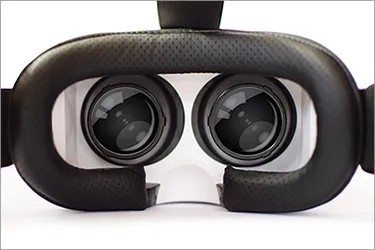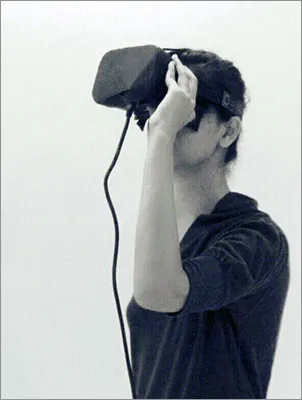Virtual reality startup Absentia raises Rs 8 cr funding from Astarc Ventures, 50K Ventures, and other angels

When three BITS Pilani-Goa undergraduate students, Shubham Mishra, Vrushali Prasade, and Harikrishna Valiyath, decided to dropout of college, they just had an idea to create something better than the Oculus.
Early this year, they founded their company Absentia in Bengaluru, and created the product – a virtual reality headgear –Tesseract. Today, they announced that they raised their first round of funding of Rs. 1.2 crore from Astarc Ventures, 50k Ventures, and other individual angel investors like Vish Satthapan, Sameer Sainani Rajeev Krishnan, Abhishek Jain, and Nagaraj Magadum.
Tesseract is a virtual reality wearable headgear that lets users play any 2D game (or watch any movie) in 3D with complete 360-degree head tracking. What differentiates this from its other competitors like Oculus is that it is compatible with all existing PC games, movies and can also live stream from online gaming communities. It can also be used with mobile phones through devices like Chromecast.
Absentia is targeting the global VR market that is predicted to cross 15 billion by 2018, according to a report on augmented reality (AR) and virtual reality (VR) by MarketsAndMarkets. The virtual reality technology market is expected to reach $15.89 billion by 2020 at a CAGR of 63.18 percent across five years.

According to the same report, the major driving forces of augmented reality technology and virtual reality are the advancement and in computer technology and Internet connectivity. The increased demand in virtual reality and AR application in healthcare industry is a direct cause for a tremendous growth in AR and VR market.
The other driving force for virtual reality and AR technology is the consumer demand in m-commerce industry. The technology used in augmented reality and virtual reality applications is expected to grow rapidly.
Many of the technology giants have entered the virtual reality space in the last few years. Facebook, Inc. acquired Oculus VR, Inc. for a whooping $2 billion in March 2014, while Sony Corp is developing Project Morpheus, HTC Corp, and Valve Corp are jointly developing HTC Vive -- a head mounted display (HMD). Microsoft Corporation has announced that its Microsoft HoloLens device is likely to be made available in early 2016. Apart from these, many other startups across the globe have entered virtual reality.

“We plan to beat global competition with our novelty and ingenuity. The device-agnostic technology developed by our team can convert any media, game to virtual reality and simulate it on the HMD – the Tesseract,” said Subham.The applications of this device are vast: it can be used by architects and product designers for 3D views of real estate developments and designs; its 360-degree vision allows users to watch videos with complete 3D immersion; and users can also view panoramic pictures in 3D or 360-degree vision.
Here’s what Salil Musale, Executive Director of Astarc Ventures, has to say about the product:
“As angel investors, we knew we had to give these three young entrepreneurs a chance to create something fantastic out of India. This is a risk we are ready to take to help young minds like these to come up with products out of India. We need more and more of such innovative products coming out of India which can challenge those created globally.”
The product will be available for pre-order soon.







